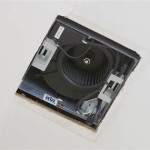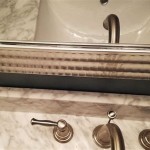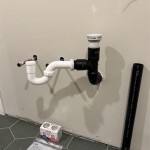How to Vent a Bathroom Exhaust Fan to the Outside Temperature
Bathroom exhaust fans play a critical role in maintaining a healthy and comfortable indoor environment. They remove moisture, odors, and pollutants that can build up during showers and other activities. Proper ventilation is essential for preventing mold growth, mildew formation, and respiratory issues. One crucial aspect of ensuring effective ventilation is venting the exhaust fan to the outside temperature. This article will provide a comprehensive guide on how to vent a bathroom exhaust fan to the outside temperature, addressing key considerations and steps for successful installation.
Understanding the Importance of Outside Venting
Venting a bathroom exhaust fan to the outside temperature is paramount for several reasons. Firstly, it eliminates the possibility of recirculating moisture and contaminants back into the bathroom. When the fan exhausts into an attic or other enclosed space, moisture can condense and lead to mold growth. Secondly, outside venting ensures that the fresh air supplied to the bathroom is not compromised by stale or polluted air. This promotes a healthier and more comfortable bathing experience.
Steps for Venting a Bathroom Exhaust Fan to the Outside Temperature
Venting a bathroom exhaust fan to the outside temperature involves several key steps. These steps ensure proper installation and efficient operation of the ventilation system:
1.
Determine the Exhaust Fan's Size and Capacity:
Before starting the installation process, it is essential to determine the appropriate size and capacity of the exhaust fan for your bathroom. The fan should be able to move a sufficient volume of air to effectively remove moisture and odors. To determine the required fan size, consider the bathroom's square footage and the number of fixtures. Consult a professional or the manufacturer's guidelines for specific recommendations.2.
Choose the Right Ventilation Ducting:
The ventilation duct connecting the exhaust fan to the exterior wall is crucial for efficient airflow. Select a duct material that is resistant to moisture, condensation, and temperature fluctuations. Common options include rigid metal ductwork, flexible ductwork, or PVC pipe. The duct size should match the fan's output capacity to prevent airflow restrictions.3.
Plan the Vent Path:
Strategically plan the vent path from the fan to the exterior wall. The vent should run as straight as possible to minimize airflow resistance and ensure optimal ventilation. Avoid sharp bends or kinks in the ductwork. If necessary, use vent elbows to navigate obstacles.4.
Install the Exhaust Fan:
Install the exhaust fan according to the manufacturer's instructions. Ensure that the fan is securely mounted and properly wired to the electrical system. Pay close attention to any special requirements for installation, such as mounting height or sealing.5.
Connect the Ductwork:
Connect the ventilation duct to the exhaust fan outlet and to the vent termination at the exterior wall. Ensure that the connections are airtight to prevent air leaks and maintain efficient ventilation. Use clamps, screws, or other appropriate fasteners to secure the ductwork.6.
Install the Exterior Vent Termination:
Install the exterior vent termination, or vent cap, at the end of the ventilation duct. The vent termination should be weatherproof and prevent backdrafting, which can draw air back into the bathroom. Choose a vent cap that is compatible with the duct size and material. Ensure that the vent termination is positioned above the roofline or at a sufficient distance from any windows or air intakes to prevent contamination.7.
Test and Adjust:
After installation, test the exhaust fan to ensure proper operation. Observe the airflow and ensure that the fan is removing moisture and odors effectively. Adjust the fan speed or settings as needed to optimize performance. Additionally, check for any air leaks or obstructions in the ductwork that might be affecting ventilation.Key Considerations for Outside Venting
When venting a bathroom exhaust fan to the outside temperature, several crucial considerations must be addressed to ensure a successful installation:
1.
Building Codes and Regulations:
Consult local building codes and regulations regarding ventilation requirements for bathrooms. These codes may specify minimum fan sizes, duct sizes, vent termination types, and other specific guidelines that must be followed.2.
Ventilation Duct Length and Material:
The length of the ventilation duct should be as short as possible to minimize airflow resistance. Avoid excessive bends or kinks in the ductwork, which can hinder airflow and reduce fan effectiveness. Consider using rigid metal ductwork for longer runs or situations where airflow resistance is a significant concern.3.
Climate Considerations:
The climate in your area can influence the ventilation system's design. In colder climates, it is important to insulate the ventilation duct to prevent condensation and minimize heat loss. In warmer climates, consider using a vent termination with a backdraft damper to prevent unwanted air flow.4.
Aesthetic Considerations:
If possible, choose a vent termination that blends aesthetically with the exterior wall. Some vent terminations are available in different colors, finishes, or designs to enhance the visual appeal of the installation.5.
Professional Installation:
For complex installations or if you are unsure about any aspects of the process, it is always advisable to consult a qualified HVAC professional. They can ensure that the ventilation system is properly designed, installed, and meets all building codes and regulations.Venting a bathroom exhaust fan to the outside temperature is a crucial aspect of maintaining a healthy and comfortable bathroom environment. By following the steps and considerations outlined in this article, you can ensure that your ventilation system is properly installed and operates efficiently. Proper outside venting helps remove moisture, odors, and pollutants, promoting a healthier, more comfortable, and safer bathroom environment for you and your family.

Venting A Bath Fan In Cold Climate Fine Homebuilding

Air Sealing Bathroom And Kitchen Exhaust Fans Building America Solution Center

When A Bathroom Fan Doesn T Vent Outside Problems And Solutions Code Engineered Systems Roofing Company Tampa
Can The Air Sucked Out By An Exhaust Fan From A Room Go Back In Through Open Window On Second Floor Of House Quora

Bathroom Ventilation And Attic Issues 2024 08 21 15 31 05

How To Vent A Bathroom Fan Through Soffit 4 Step Guide Home Inspector Secrets

5 Reasons Bath Fans Have Such Poor Air Flow Energy Vanguard

House Ventilation 101 A Homeowner S Guide To Continuous Running Exhaust Fans Center For Energy And Environment

Installing An Exhaust Fan During A Bathroom Remodel Greenbuildingadvisor

Bathroom Ventilation 9 Easy Ways To Improve Bob Vila
Related Posts







